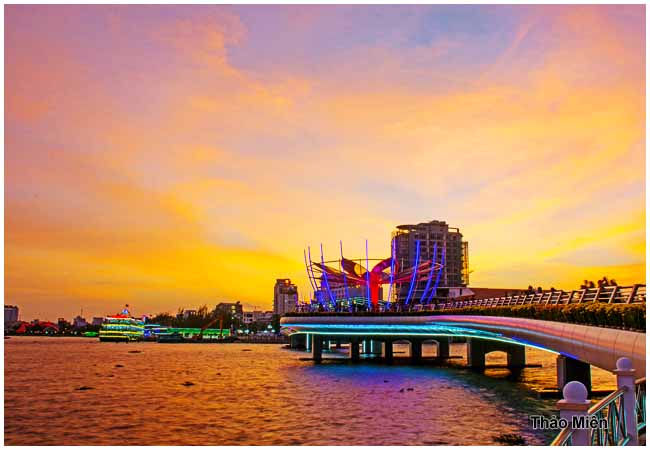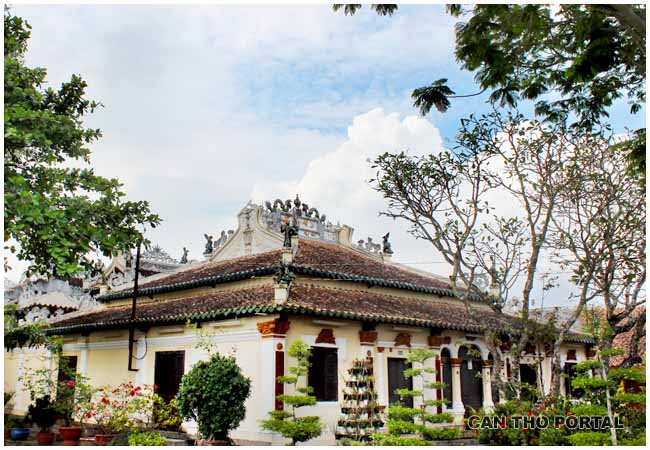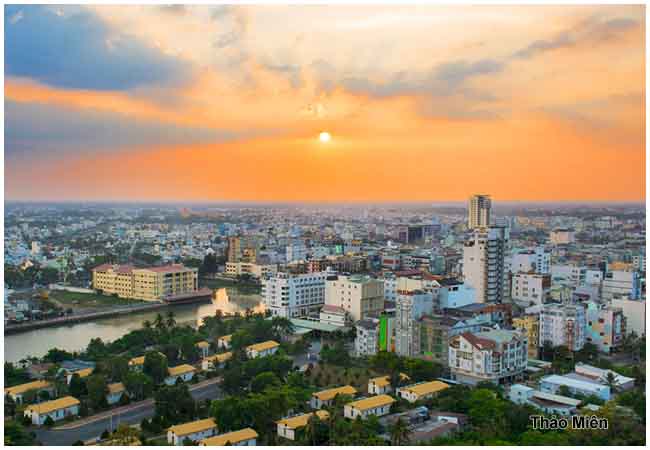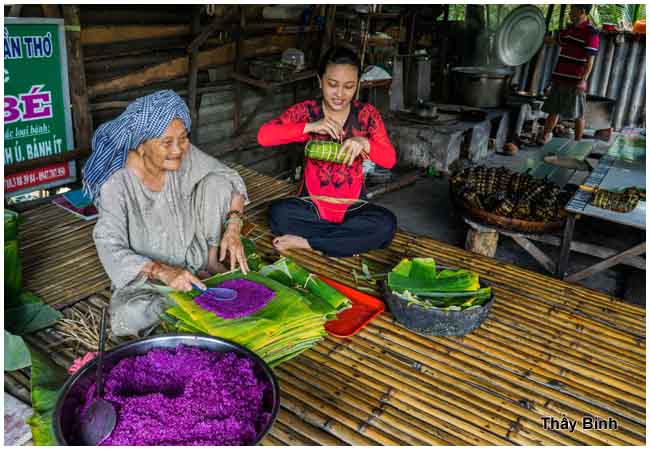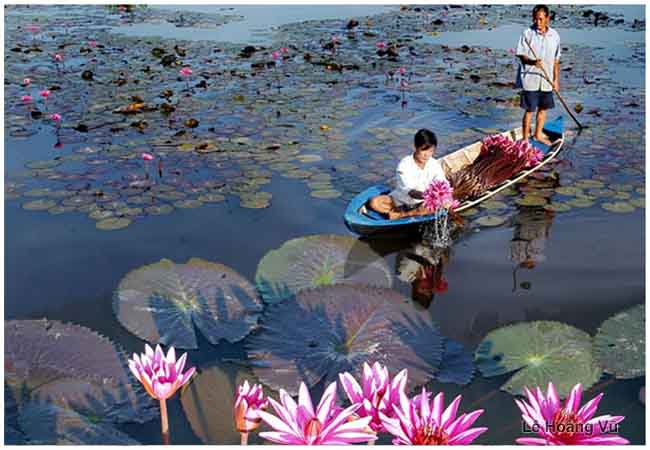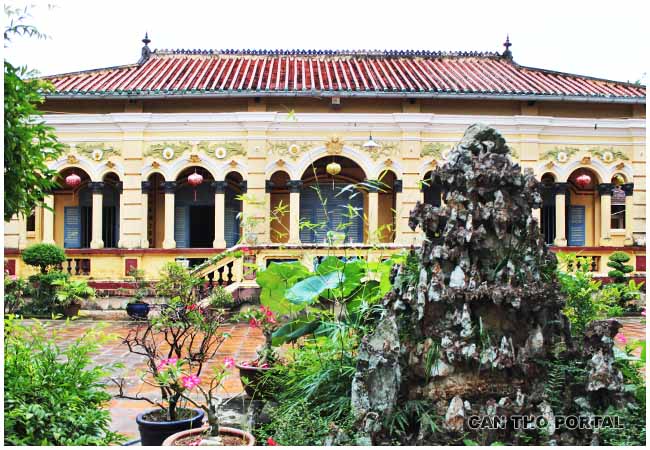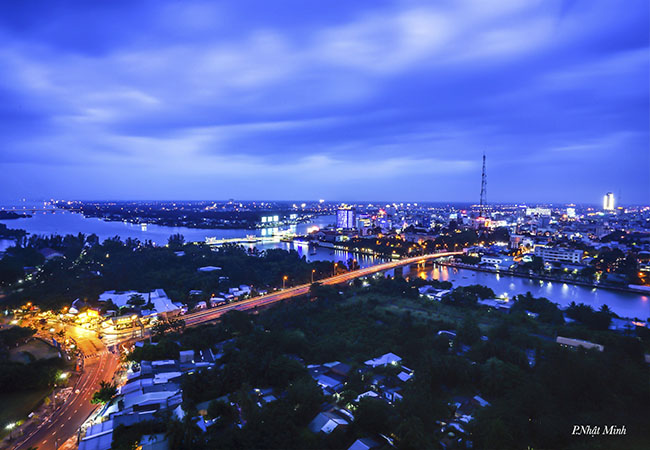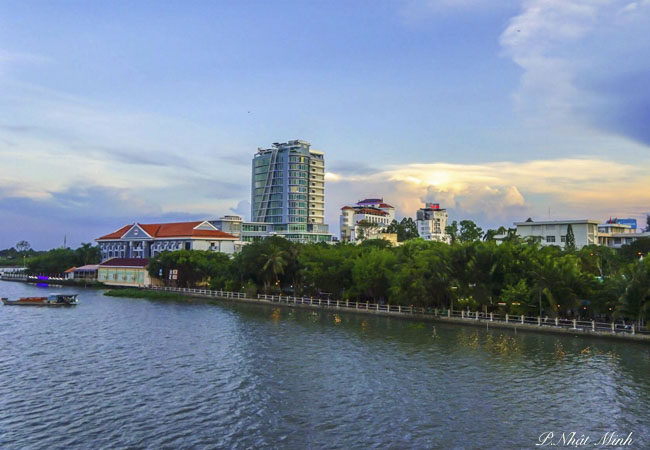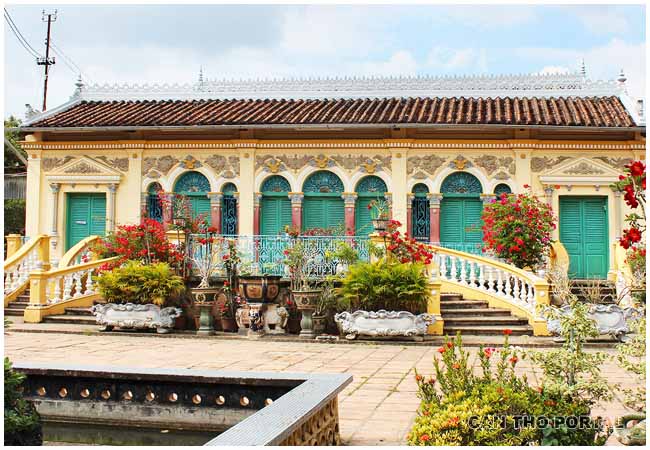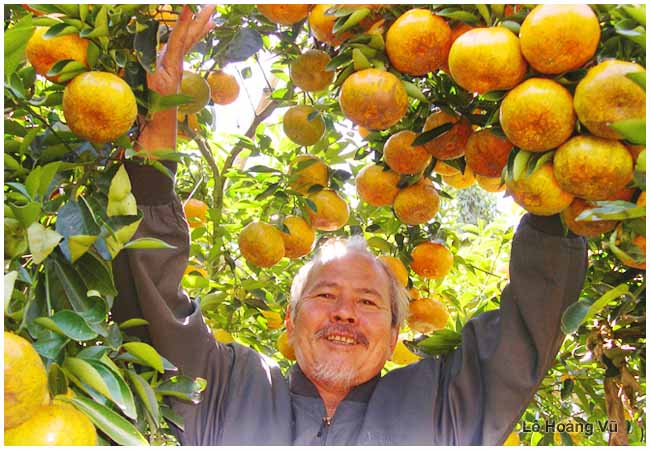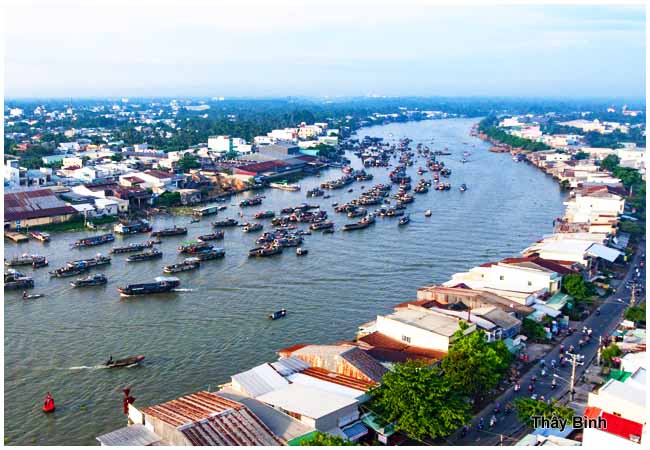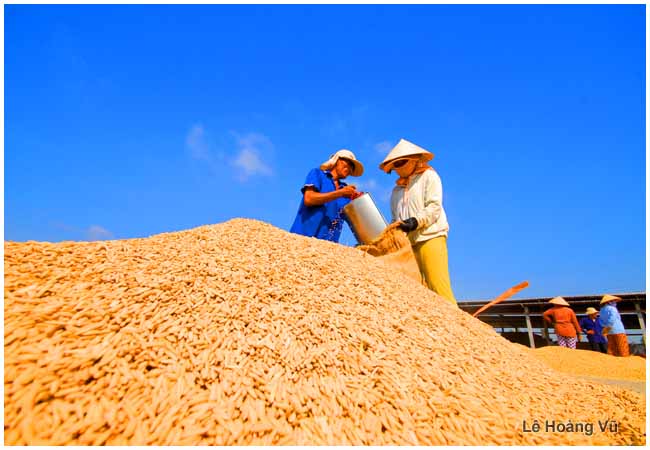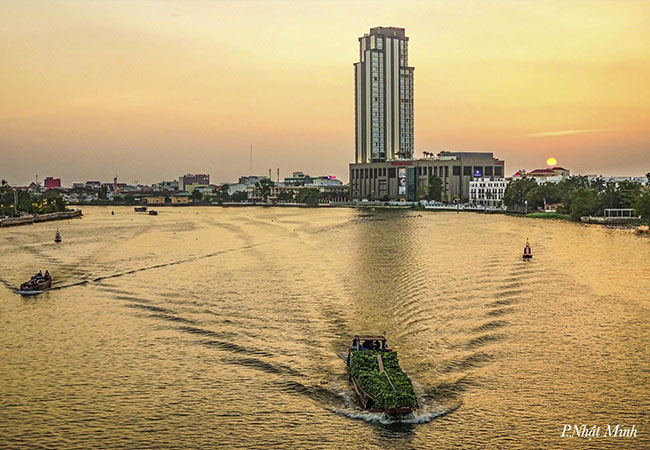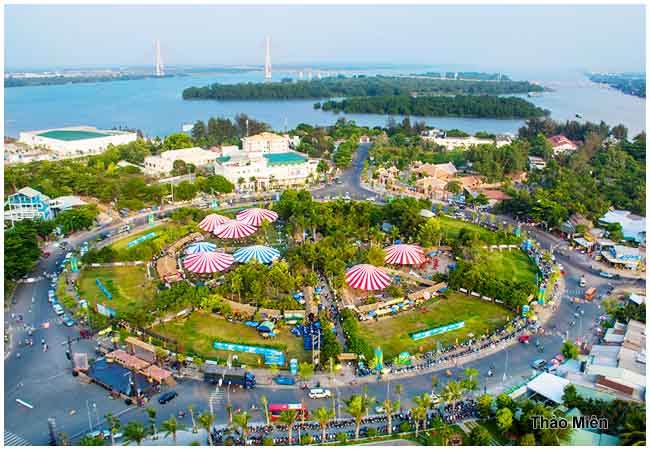
From Ninh Kieu wharf, we take a Tắc Ráng - a kind of boats with a motor which can travel on big river as easily as creep along small canals. Despite the rainy reason, it is clear today. The Tắc Ráng takes us along Can Tho River running through Cai Rang Floating Market. In the afternoon, the market seems to be quiet because people are having their lunch break. However, traffic on this river is still very bustling due to lots of boats and ships transporting goods and passengers.
It takes us approximately 40 minutes to arrive at Ong De Canal, where we turn into the house of Mr. Muoi Cuong - the first home stay in our excursion. Today due to the high tide, the countryside seems to be more attractive, more beautiful and fresher with green grassy river banks. After travelling for 100 meters, the boat stops and we all go ashore.

Carrying from 2 to 4 visitors, small boats creeping along the
canals is known as a unique way of “taking a walk” in this waterways
countryside of the South.
The house in cocoa gardens
Seen from outside, Mr. Muoi Cuong’s home stay area looks spacious and airy. In a large garden are many contiguous houses. There are flowers and ornamental plants in the front yard. Mr. and Mrs. Muoi Cuong as well as their family welcome us warmly. Then he introduces his extended family including children, children – in – law and grandchildren - a family with three generations living together. Such a lifestyle seems to disappear in industrial developed countries. We check in and take two air-conditioned rooms from which a clear path leads to either the garden or the comfortable kitchen. In this break time, some people are bathing and resting; others walk around the cocoa gardens mingled with other types of fruit trees .
About an hour later, we along with the family go to cocoa gardens to harvest ripe fruit. Ripe cocoa smells sweet, somewhat sour, and tastes better when mixed with ice cubes. After the pods are picked down, they are smashed to get the pulp (including beans and white pulp) which will be extracted and put in a wine barrel. Then, cocoa pulp is brewed in suitable temperature for fermentation; after totally fermented, it will be dried directly in the sunlight before its white pulp is filtered. While explaining the production procedure, Mr. Muoi Cuong shows us how to break cocoa outer layers, take out their pulp and put it on the banana leaves in the baskets.
Mr. Muoi Cuong and some of us bring some dried cocoa inside, filter the pulp to get the beans which will be put into the oven for roasting. Oven is designed manually as a ion cage (like the mixer tank), fueled by dry tree branches in the garden. This process makes full use of all parts of the trees in the garden. We take turns to roast the beans with Mr. Muoi Cuong. Then, they are let cool down and are peeled, powdered by a homemade grinder with two stones generated by a rotary motor. Cocoa powder is used to make the two products - one is powder for making drinks and the other for mixing with other substances to make chocolate.

Homemade cocoa, though manually produced, has high quality and good taste like other famous brands. We have chances to try all the chocolate products. Homemade chocolate bars look a bit rough, but their quality is as great as well known ones sold in stores or supermarkets.
Before picking ripe cocoa pods, the owner gives some baskets to others to put the vegetables they will pick for dinner. The vegetables commonly found in the garden are blumea lacera, janglimuli, limnocharis flava, water lily, verbenaceae….
It is advancing to the evening, and it is time for making southern spring rolls whose ingredients have already been prepared. These typical Southern spring rolls are wrapped in salty rice paper. The stuffing is a mixture of shrimp, pork and taro. The rolls are served with spicy and sour fish sauce. Mr. Muoi and some friends of his catch some fish to prepare fried fish which will be wrapped in rice paper making a special dish for dinner. Vegetables picked from the garden will be boiled. Everyone takes turn to keep the cook stove burning well.
It is a wonderful meal with a plate of fried noodles with tofu and vegetables, vegetables cooked with shrimps of the flood season, hot white rice together with the dishes that everyone helps to cook. Sitting under the eaves facing the garden, visitors and Mr. Muoi Cuong’s family enjoy the meal together. Sipping the homemade cocoa liquor in the cozy and peaceful family atmosphere seems to make all the food more delicious. After having dinner with the family, we chat with the family members about gardening, customs and practices of the locals ... /.
Source: thesaigontimes.vn, Translated by Ngoc Diep - CTU





